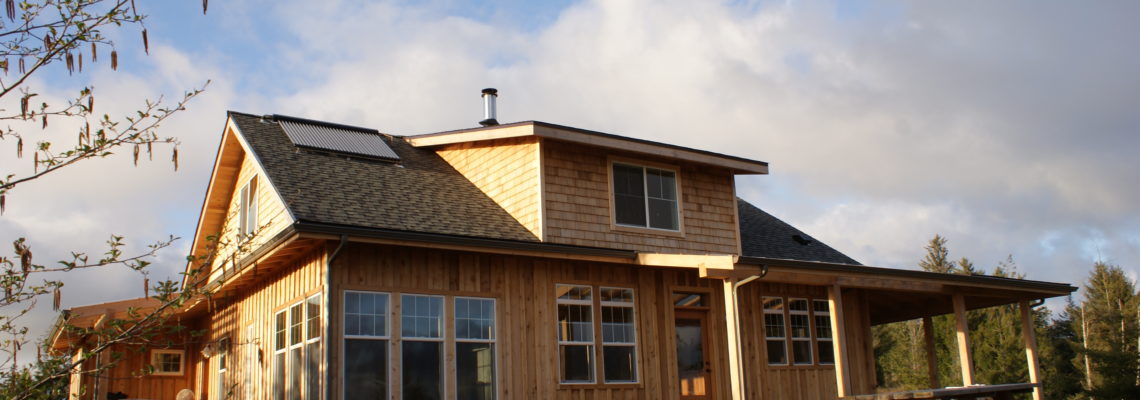You’ve seen the solar panels on the roof of the visitor’s center in Coos Bay. You’ve heard about a plane that flew around the world powered by solar electricity (Wait, you haven’t? Click here to read about the no-fuel plane). But, what is “passive solar” and why should it mean anything to you?
Passive solar is a design principal that has been around since humans started putting up structures to live in. Imagine you are gathering materials and building yourself a structure. It’s the middle of winter, the days are short and cold, and you want your structure to be warmer. Where do you put it?
In the SUN!
Now, you’re building your structure in the middle of summer. These long, hot days make you weary and your skin is red and chapped. Where will you put your structure this time?
Out of the SUN!
There you go — passive solar design.
But really, there’s a bit more to it than that. As our species evolved, naturally, our building technologies have evolved. In the construction industry we have come to recognize passive solar design as a set of features we can draw upon when making a building more comfortable for its occupants and more energy efficient. These features are not a rigid blueprint that is static and unchanging. Rather, passive solar design principles are fluid and the more you can incorporate into a project, the better! Contractors who are well-versed in passive solar may incorporate one or all of these features into your project for the ultimate goal of comfort and environmental sustainability.

First, the building’s orientation in relation to the path of the sun through the sky can maximize passive solar heat gain and provide natural light. The more surface area your house has on the south side, the more surface for the sun to warm and shine through windows! Windows placed in strategic positions throughout the house can let in sunlight in the morning, all day, or in the evening.
Second, any windows you have must allow a good amount of sunlight to penetrate them, but also be designed to regulate heat. We want our homes to be naturally warmer in the winter and cooler in the summer. Using new windows that are properly installed will ensure your home is well insulated.


Third, you can utilize overhangs and natural landscaping to shade more sun in the summer and expose more sun in the winter. Remember, the sun is higher in the sky in the summer, so your overhangs can be positioned to block out that hot summer sun yet let the warm light in during winter.
Another way to benefit from the sun’s light? Use skylights that are efficient in maximizing sunlight yet keeping in heat. Who doesn’t love a natural sunlight glow over artificial bulbs?
With construction projects you have a unique opportunity to create a building that is more comfortable, more energy efficient, and works with nature instead of against it. Passive solar design is just one way to minimize your impact on the environment. Check out Sol Coast Construction’s page to learn more about what you can do to make your project work for you.


